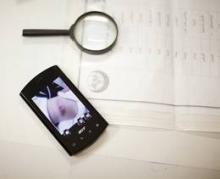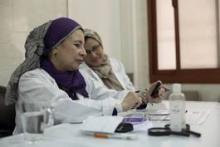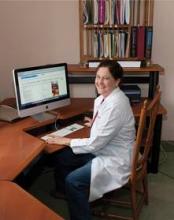A program that electronically connects primary care physicians with dermatologists for consultations has been a winning combination and may eventually be employed as a strategy to help more patients access basic dermatology.
The telemedicine dermatology pilot project was launched in September 2010, with backing from the American Academy of Dermatology (AAD). It was developed over a period of a few years, with leadership from AAD past-president Dr. William D. James.
The idea was to take the experience gained internationally, particularly in Africa, and apply it to shortage areas in America, said Dr. Carrie Kovarik, cochair of the AAD's ad hoc task force on teledermatology for underserved communities.
"We thought we'd start with a core of dermatologist volunteers across the U.S. who would partner with a local clinic who served the underinsured or uninsured" – basically people who have trouble accessing dermatology care in a reasonable time frame, Dr. Kovarik said in an interview.
The idea was tested in Philadelphia, where 75 patients were successfully given consults through a Web portal–based application.
Now, the service is available in 26 primary care clinics nationally – in urban, suburban, and rural areas. The majority are in inner cities, however. Since its launch in September, the volunteer dermatologists have provided 370 consults, said Dr. Kovarik, an assistant professor of dermatology at the University of Pennsylvania, Philadelphia.
The Smartphone Evolution. The consults started out on a basic cell phone with a camera, according to Philip Miller, chief executive officer of Click Diagnostics, the company that developed the software for the AAD.
The company's first project was a teledermatology program in Egypt that is now being expanded. Of 30 initial cases in the Egyptian project, Dr. Kovarik and her colleagues showed that there was agreement an average of 75% of the time between on-site dermatology consults and the telemedicine dermatologists (J. Am. Acad. Dermatol. 2011;64:302-9). The most common reasons for diagnostic nonagreement were incorrect diagnosis by the on-site physician (who was a junior physician) and insufficient history taken.
After the Egyptian pilot project, the company went on to develop teledermatology and telemedicine projects in Botswana, Kenya, and Ghana.
Click Diagnostics developed an Android-based application for the AAD project because cell phone access is more widespread than Internet access, said Mr. Miller in an interview. The AAD bought a phone for each clinic participant that came preloaded with the teledermatology application.
If the primary care physician wants a consult with a dermatologist, he or she first asks the patient's permission. They then use the app to take a picture of the condition. The physician also answers a series of questions, as prompted by the app. The photo and history are bundled and sent to a Web portal maintained by the AAD.
The consulting dermatologist who is paired with that clinic gets an email that a case is waiting. When the dermatologist gives the consult, it is sent back to the phone and to the primary care physician’s account on the Web portal.
The local pairings are crucial, because if the consulting dermatologist believes a biopsy or follow-up with a dermatologist is required, the patient will be referred to a local specialist. Of course, there may still be a wait for an appointment. But the turnaround time on consults has been very short, said Dr. Kovarik. "It's actually been pretty amazing," she said, adding that 90% of cases are answered within 24 hours of receipt. The rest get responses within 72 hours, she said.
"The first group [of dermatologists] we enlisted have been really motivated … people," she said. At the University of Pennsylvania, there are five attending physicians and one resident assigned to answer cases. "It's a race to see who picks it up first," said Dr. Kovarik.
Solution in Somerville. Dermatologist Karen McKoy said that taking on consults with Somerville (Mass.) Hospital Primary Care has been a pleasure. It has been personally satisfying to help others, said Dr. McKoy of the dermatology department at the Lahey Clinic in Burlington, Mass. She also said she enjoys helping her primary care partners learn more about dermatology.
Telemedicine was not a new concept for her, as she has been working on a volunteer basis with an international dermatology case-sharing website for the past 8 years. She is also the secretary of the International Society of Teledermatology.




